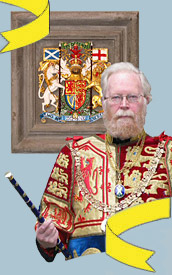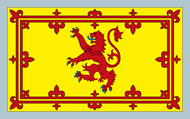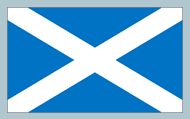| This Week’s Topic… | |

Best viewed in
|
The Lord Lyon
The Court of the Lord Lyon - the official heraldry office for ScotlandThe office of Lyon King of Arms dates from the 14th century. The earliest official record is of the appointment of a Lyon by King Robert the Bruce in 1318, but the office may be older. The position incorporates the ancient Celtic office of High Sennachie who was responsible for verifying the genealogy of the King of Scotland and for crowning the King at his coronation. The current Lord Lyon is William David Hamilton Sellar (born 27 February 1941). He graduated from the University of Oxford with a degree in history and the University of Edinburgh with a degree in law. He qualified as a solicitor in 1966. In 1968 he joined the Faculty of Law at the University of Edinburgh where he is an Honorary Fellow. He has published on the Lordship of the Isles and on the origins of many Highland families, including the Campbells, MacDonalds, MacDougalls, MacLeods, Lamonts, Maclachlans, MacNeills and Nicolsons. He has been a Member of the Ancient Monuments Board for Scotland and Vice-President of the Society of Antiquaries of Scotland. He has also served on the Council of the Scottish Genealogy Society and the Heraldry Society of Scotland. He has held the office of Bute Pursuivant of Arms since 2001. In 2008, he was appointed Lord Lyon King of Arms. The Lord Lyon is the sole King of Arms in Scotland. He is Head of the Heraldic Executive and the Judge of the Court of the Lord Lyon which has jurisdiction over all heraldic business in Scotland. He is assisted by Her Majesty's Officers of Arms, all of whom are members of the Royal Household. There are at present three senior Officers of Arms (Albany Herald, Rothesay Herald and Ross Herald) and two junior Officers of Arms (Carrick Pursuivant and Unicorn Pursuivant). The Officers of Arms may be consulted on matters of heraldry and genealogy by members of the public and may represent their clients before the Lyon Court. The Officers of Arms also take part in ceremonial occasions. An Act of the Scottish Parliament of 1592 gave the Lord Lyon responsibility for prosecuting as a criminal offence anyone who uses unauthorized Arms. The Court has its own Procurator Fiscal, an independent official prosecutor. In 1672 a further Act of the Scottish Parliament authorized the creation of the Public Register of All Arms and Bearings in Scotland. This Register is maintained by the Lyon Clerk and Keeper of the Records and contains an official copy of every Coat of Arms granted in Scotland since 1672. The Court of the Lord Lyon is also responsible for the correct display and use of the National Flags in Scotland.
The 'Lion Rampant' Flag This is not a national flag and its use by citizens and corporate bodies is entirely wrong. Gold, with a red rampant lion and royal treasure, it is the Scottish Royal banner, and its correct use is restricted to only a few Great Officers who officially represent The Sovereign, including;
Its use by other, non-authorized persons is an offence under the Act of Parliament 1672 cap. 47 and 30 & 31 Vict. cap. 17.
The SaltireThe flag of St. Andrew, the patron saint of Scotland. Blue with a white or silver diagonal cross reaching to its edges, this is the correct flag for all Scots or Scottish corporate bodies to fly to demonstrate their loyalty and their Scottish nationality. Its proportions are not fixed, but 5:4 is suitable. It is correct both to fly it with or instead of the Union flag. If both are flown they must be on separate poles, the Union flag being on the most important pole.
The Union FlagPopularly called, “The Union Jack", this is the correct flag for all citizens and corporate bodies of the United Kingdom to fly to demonstrate their loyalty and their nationality. It is often incorrectly flown upside down. The correct position is that the broader white diagonals should be uppermost in the hoist, ie next to the pole. Its correct proportions are 2:1 |



